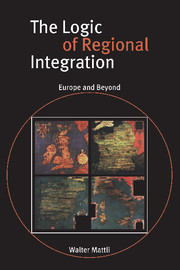3 - Explaining regional integration
Published online by Cambridge University Press: 06 July 2010
Summary
Introduction
The general analytical framework for understanding regional integration begins with a discussion of the factors determining the outcome of regional integration schemes, which is followed by an examination of the consequences of integration for outsiders. Throughout the text integration is defined as the voluntary linking in the economic domain of two or more formerly independent states to the extent that authority over key areas of domestic regulation and policy is shifted to the supranational level. Unlike traditional political-science explanations, the account offered in this chapter stresses the importance of market factors in determining the outcome of integration schemes; but unlike purely economic theories it holds that market integration cannot be explained without reference to institutional factors.
This chapter seeks to address two related puzzles of regional integration, one implicating the insider countries in an integration process, the other the outsiders. The first puzzle can be stated as follows: why have so many attempts at integration failed while a few have been crowned with success? The second puzzle is: what explains when outsiders seek to become insiders? Outsiders can become insiders either by joining an existing economic union or by creating their own regional group.
The first puzzle, the variation in outcomes, is illustrated by the wide range of integration results. At one extreme, the highly successful European Union has managed over the past forty years to establish an array of institutions and policies, as well as a broad and clearly defined set of rules, which are hierarchically superior to domestic law and directly applicable in the member states of the Union.
- Type
- Chapter
- Information
- The Logic of Regional IntegrationEurope and Beyond, pp. 41 - 67Publisher: Cambridge University PressPrint publication year: 1999
- 2
- Cited by



